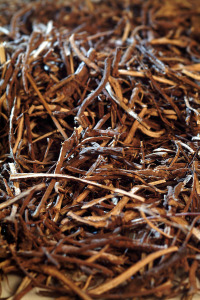
Bupleurum belongs to the large Umbelliferae family (umbelliferous plants).
It is used, for example, as a so-called indicator medicine for a number of tracts and interrelates with many functional areas, such as liver feedback circuit (Orbis hepaticus), the gall bladder feedback circuit (Orbis felleus), the pericardium feedback circuit (Pericardialis) and the three-heat area (Tricalorium).
Bupleurum belongs to the large group of pungent, cool and surface-opening medicines and – in accordance with Chinese notions – has a particularly surface-freeing, fever-reducing, antipyretic effect; it also eliminates heat.
The liver qi is regulated and the upward movement of the spleen qi is supported as an important pathophysiological factor in Chinese medicine (in contrast to stomach qi, which has to move downwards).
Bupleurum is administered in the treatment of all liver qi stagnation processes that can manifest themselves in, for example, pains in the costal arches, dizziness, tinnitus, menstrual disorders, sight disorders, emotional instability and hot flushes. It is also used, however, to treat falling spleen qi processes that can manifest themselves in fatigue, anal prolapse, chronic diarrhea or prolapse of the uterus.
Bupleurum is used in large numbers of remedies, for example in serenity powder (Pulvis serenitatis or Xiao Yaosan), and also in the great bupleurum decoction (Da Cai Hu Tang) and the cold extremity powder (Sinisan).
Bupleurum can also be administered with excellent results in the psychiatric field, e.g. for the treatment of psychiatric disorders such as irritability, depressive tendencies, chronic weakness, psychogenic dizziness, etc.


